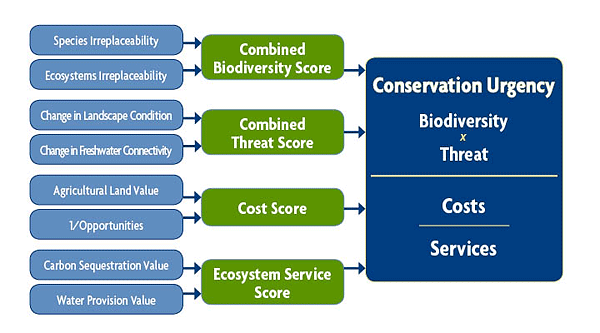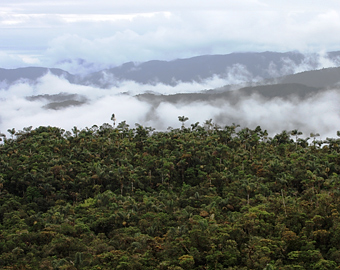Pressure on biodiversity is mounting over vast areas of the Amazon Basin. Ameliorating these pressures to safeguard natural habitats and the ecosystem services they provide to human communities requires that decision-making processes are informed by relevant and up-to-date datasets.
Watersheds served as the primary units for the analysis because of their significance for ecological and hydrological processes and their application potential for analyses required at any geographic scale. NatureServe and its collaborators assessed the relative importance of individual watersheds across a project area that covers parts of four countries, taking advantage of newly available data for:
- Several species groups
- Aquatic and terrestrial ecological systems
- The distribution of threats
- Ecosystem services
The resulting thematic analyses scale across a nested set of watersheds (Josse et al. 2013), with the purpose of providing information meaningful for conservation interventions occurring at both local and regional levels.
We began by using biodiversity data to measure conservation value as the irreplaceability of unprotected threatened species and ecosystems. We then combined this result with data on threats to yield a measurement of conservation urgency.
As the final analytical step, we integrated in the analysis the conservation costs (given the land opportunity cost and development of conservation enabling conditions), as well as the potential benefits from water and carbon resources.
This approach highlights places carrying the most vulnerable elements of biodiversity with the fewest options for conservation, the most potential for services benefits, and the least cost for implementing actions.


NatureServe’s science team collaborated with an international team of researchers to compile data and develop cost-benefit analyses that identify those places within the Andes-Amazon region where investments in biodiversity conservation can yield the greatest returns, given available resources.
The Eastern Andes and the Western Amazon Basin are already recognized as one of the world’s most important areas for biodiversity richness and endemism, but the region’s countries are under pressures to increase access to land and develop natural resources for growing capital markets. Impacts from such activities increase the relevance and urgency of the themes under review in this project:
- Vulnerable and irreplaceable elements of biodiversity
- Value of ecosystem services
- Current and forecasted distribution of threats
- Opportunity cost of conservation investments
The results of these studies can support and improve not only conservation decision-making but also the application of the environmental impact assessment standards increasingly endorsed by international lenders as benchmarks for sustainable development investments.